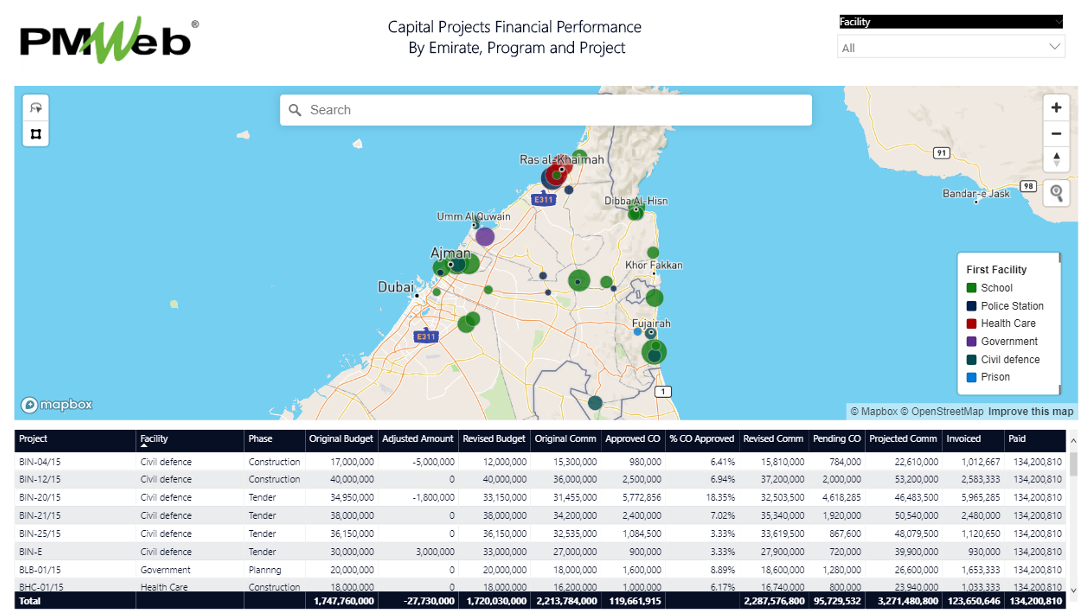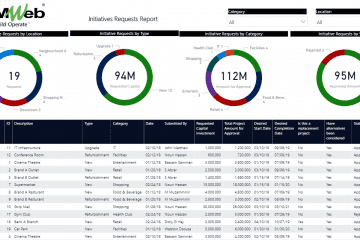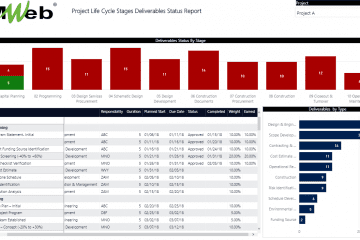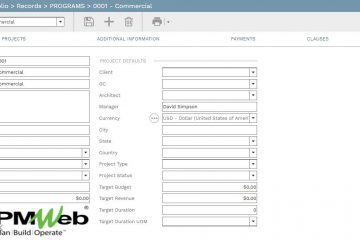Regardless of the projects’ types that an organization could be involved in delivering, the Project Management Office (PMO) at those organizations would usually have the requirement to implement the generic project management processes identified in the Project Management Institute (PMI) Project Management Body of Knowledge (PMBOK®). This requires having forms and reports to support the implementation of those processes by the PMO team members. The “A Project Manager’s Book of Forms,” third edition by Cynthia Snyder Dionisio, a companion to the PMBOK® Guide – Sixth Edition, provides an example of more than 60 possible generic forms that PMOs can use. Of course, those forms can be modified to comply with each PMO project management needs.
The advantage of having a Project Management Information System (PMIS) like PMWeb is that an organization can use PMWeb to implement the detailed project management processes that are specific for each project type that they have like capital and re-capitalization projects, shutdown projects, among others, as well as implement the generic PMBOK® generic forms. This will not only ensure having a standard application that the different organization’s stakeholder can learn and use but most important is that there will be a single data source to ensure a consolidated, real-time, single version of the truth projects’ performance reporting.
PMWeb Visual Form Builder will be used to jump-start creating the needed PMBOK® forms in the desired layout. Also, PMWeb Document Management Repository will create the folders to match the filing structure required to upload and store all supportive documents for those processes and set the necessary access rights for each folder. PMWeb Workflow module will add the submit, review, and approval steps for forms that require having such workflows. Finally, the information captured in the PMBOK® forms and workflows will become the basis for creating the desired project and projects portfolio dashboards.
For example, the Assumptions Log form will include a header that details the project name, form number, date created, and the status of the form, which could be manually added or automatically extracted from the assigned workflow. The form will also include a table to capture the details of the different assumptions made on the project. Many other forms will have a similar layout like the Stakeholder Register, Stakeholder Analysis, among many others. It should be noted that the type of fields in each table could be numeric, text, currency, date, values to be selected from a predefined list of values, and Boolean.

In addition, there could be forms that require having more than a single table, like the Project Management Plan form. PMWeb allows setting access rights for each table so that different team members can be assigned to each table. Those tables can be aligned with the workflow steps to ensure the desired sequence in completing the PMBOK® form.
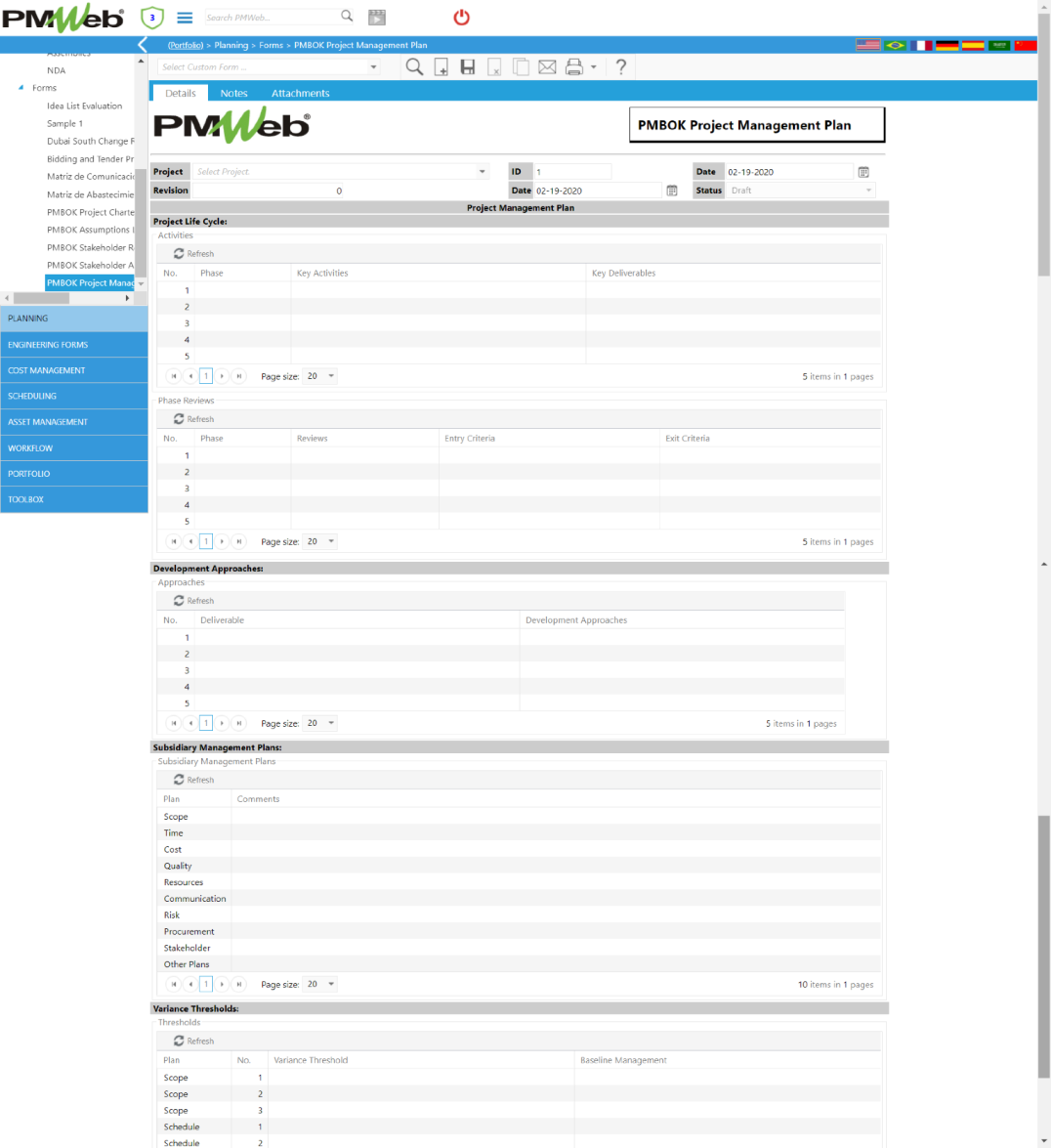
Further, there could be forms requiring using fewer tables and different fields to capture the needed information of the PMBOK® process. The Project Charter is an example of a form that uses many unique fields and tables to capture the required information to generate the Project Charter. PMWeb allows assigning different access rights for the defined fields and tables to ensure that the right project team member is providing the needed information. Those fields and tables can be aligned with the workflow steps to ensure the desired sequence in completing the PMBOK® form. It should also be noted that for numeric and currency fields, PMWeb allows adding formulas to calculate the values of other related fields in the same form.
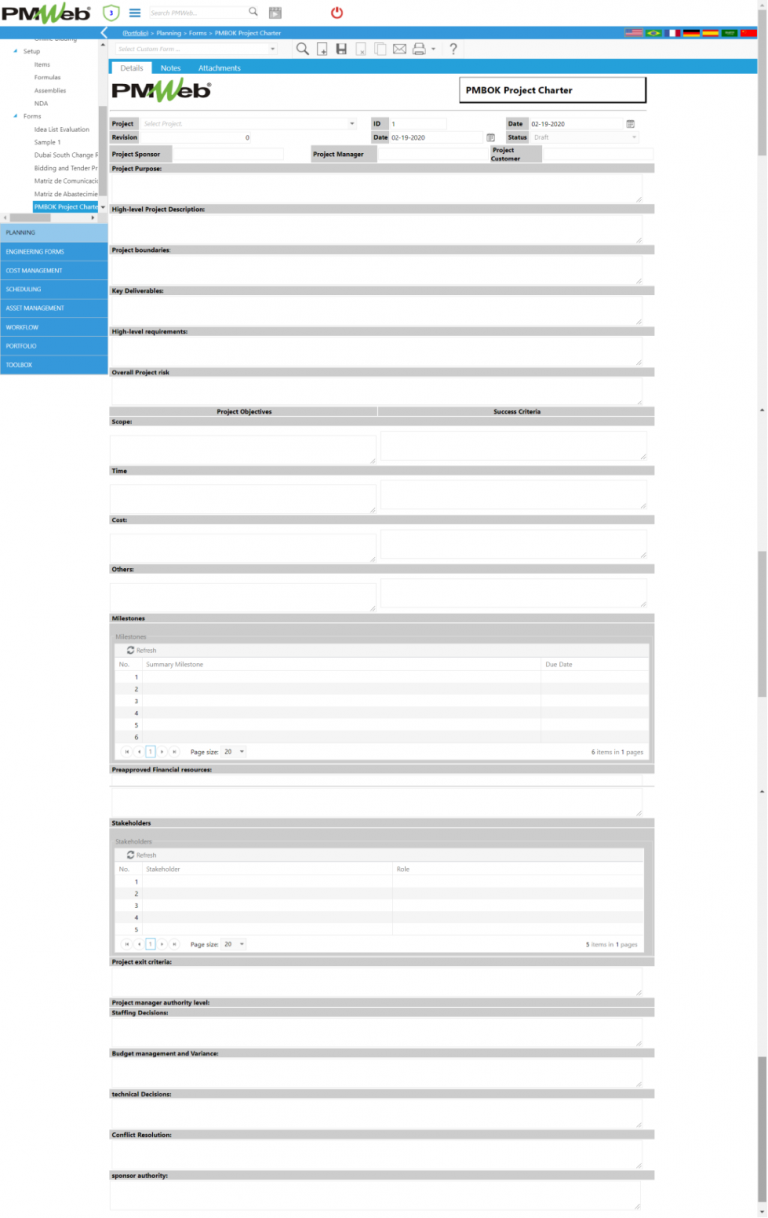
In addition, PMWeb allows attaching all supportive documents for each PMBOK® form. Those documents are usually uploaded into the PMWeb Document Management repository under the folder specific for each process. Also, links to other relevant PMWeb records and imported MS Outlook emails can also be added. This will ensure complete transparency into the content of each formal project communication.
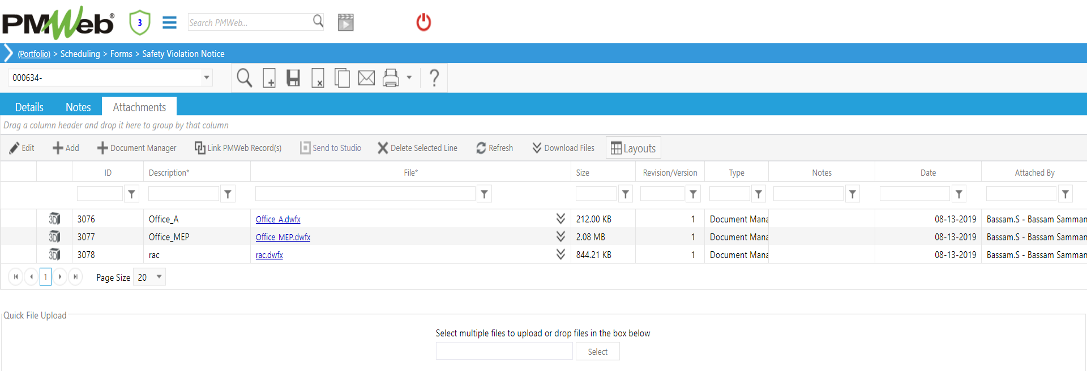
A workflow will be assigned to each PMBOK® form to ensure that responsibility for submitting, reviewing, and approving the different PMBOK® processes are formally implemented. The workflow will identify all needed steps, each step’s duration, responsibility for each step, actions taken for each step, and sequence for performing those steps. PMWeb also allows adding conditions to the workflow steps to incorporate the approval authority levels.
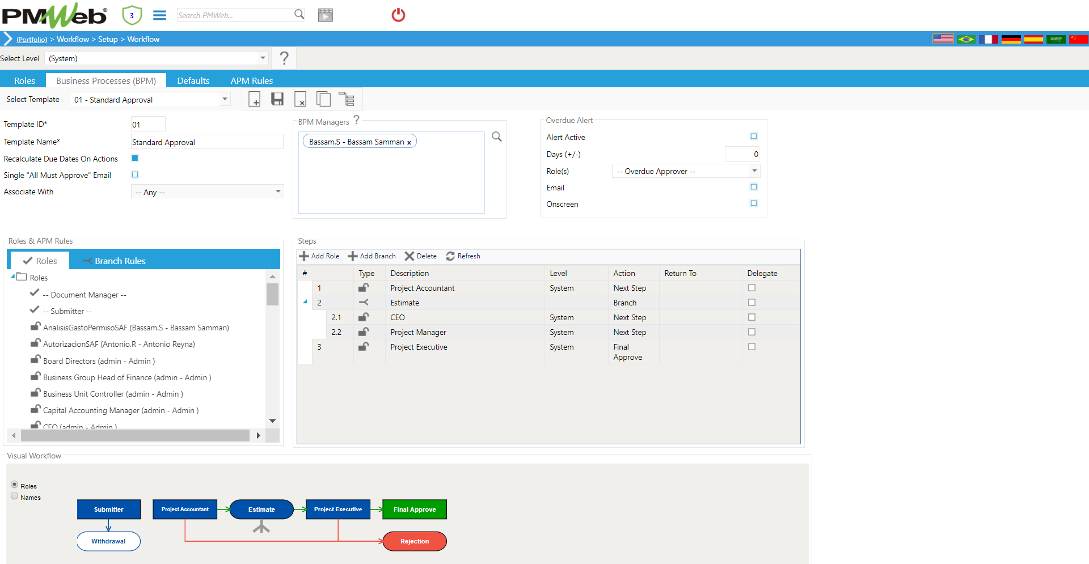
The out-of-the-box Workflow Inbox report generated by PMWeb Project Management Information System (PMIS) is an essential report to detail the status of all workflow review and approval steps or tasks. Coloring delayed tasks can further improve this report in red, scheduled tasks in cyan, and yet to be due to green tasks. The report can also be modified to include additional data fields should the PMO has this requirement.
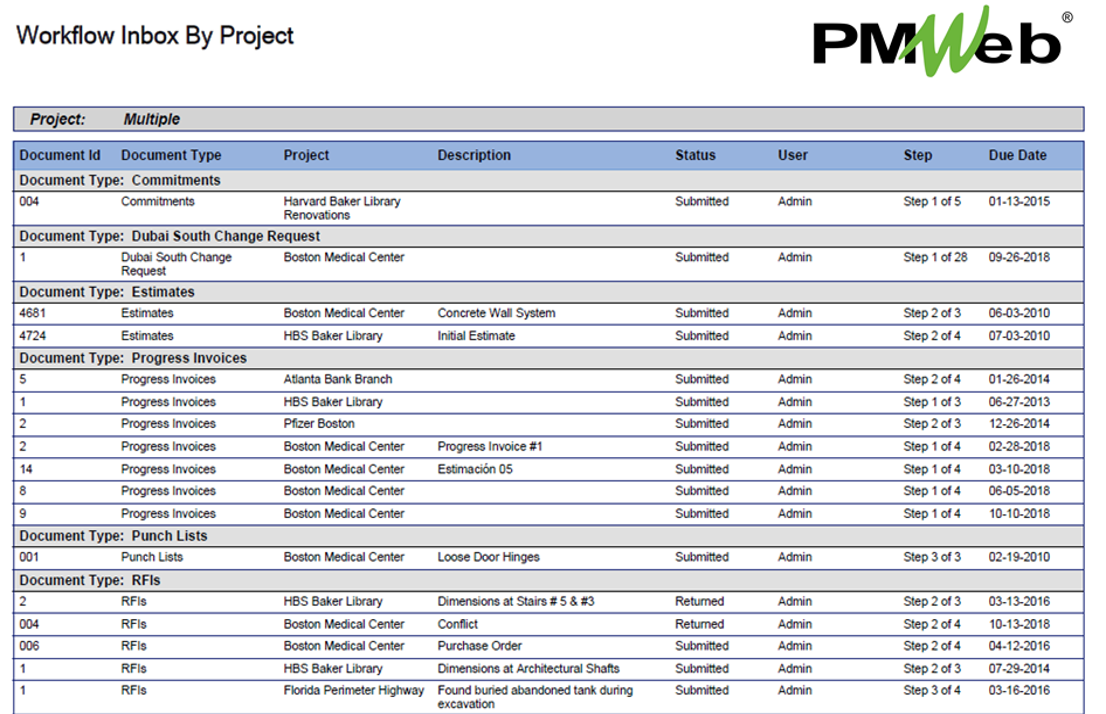
The data captured in the different PMBOK® forms will become the basis for creating the different reports and dashboards needed to share and communicate the projects’ information. Those reports and dashboards can be specific to a single project or a portfolio of projects. They can also be specific to one of the PMBOK® knowledge areas like risk or covers all. The layout and format of those will be customized to meet each PMO reporting requirements.
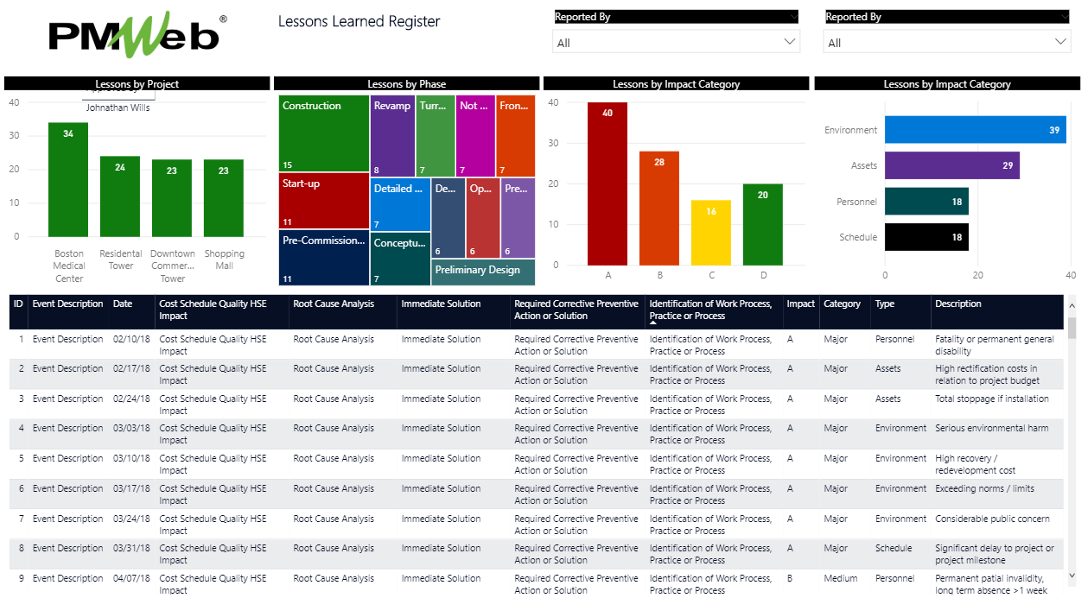
For dashboards used to report the performance of projects’ portfolios, it is highly recommended to have a map to display those projects’ locations. Those locations will be based on the latitude and longitude values for each project, which is captured in the PMWeb Project module.
